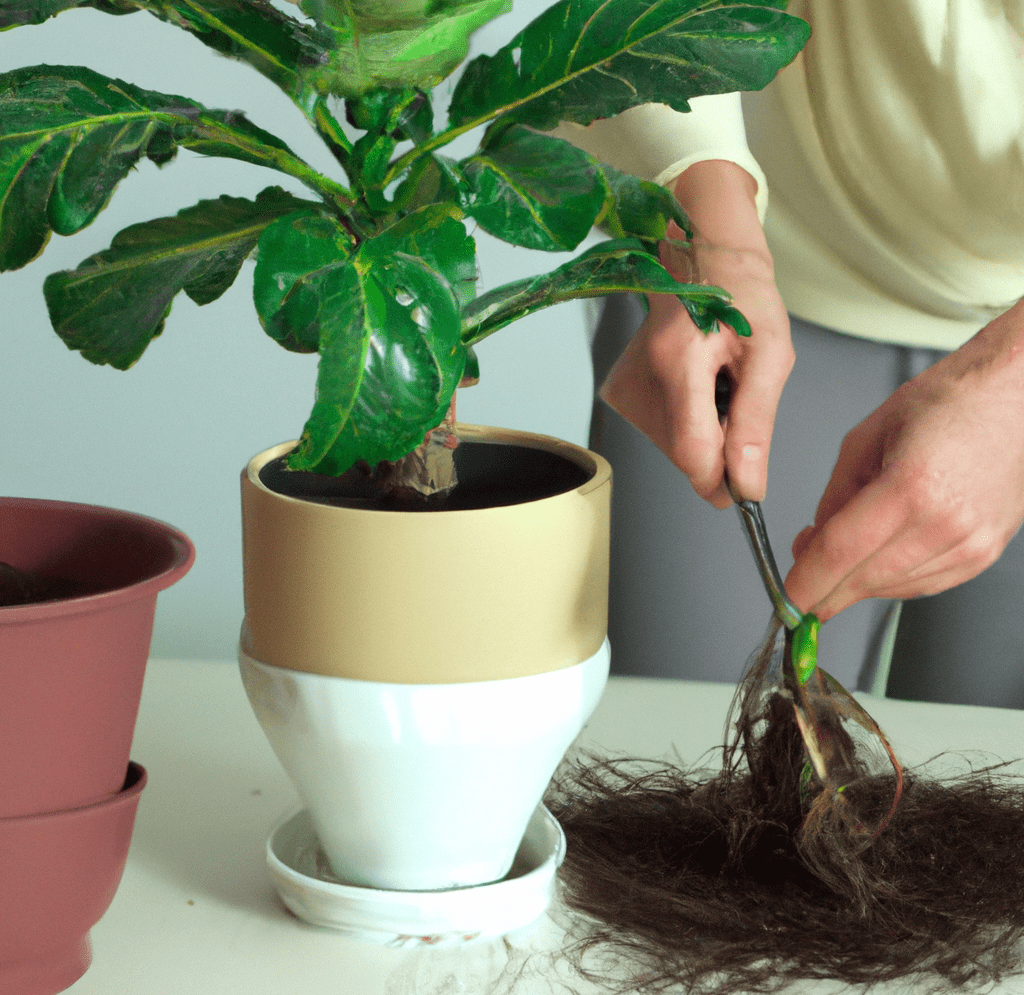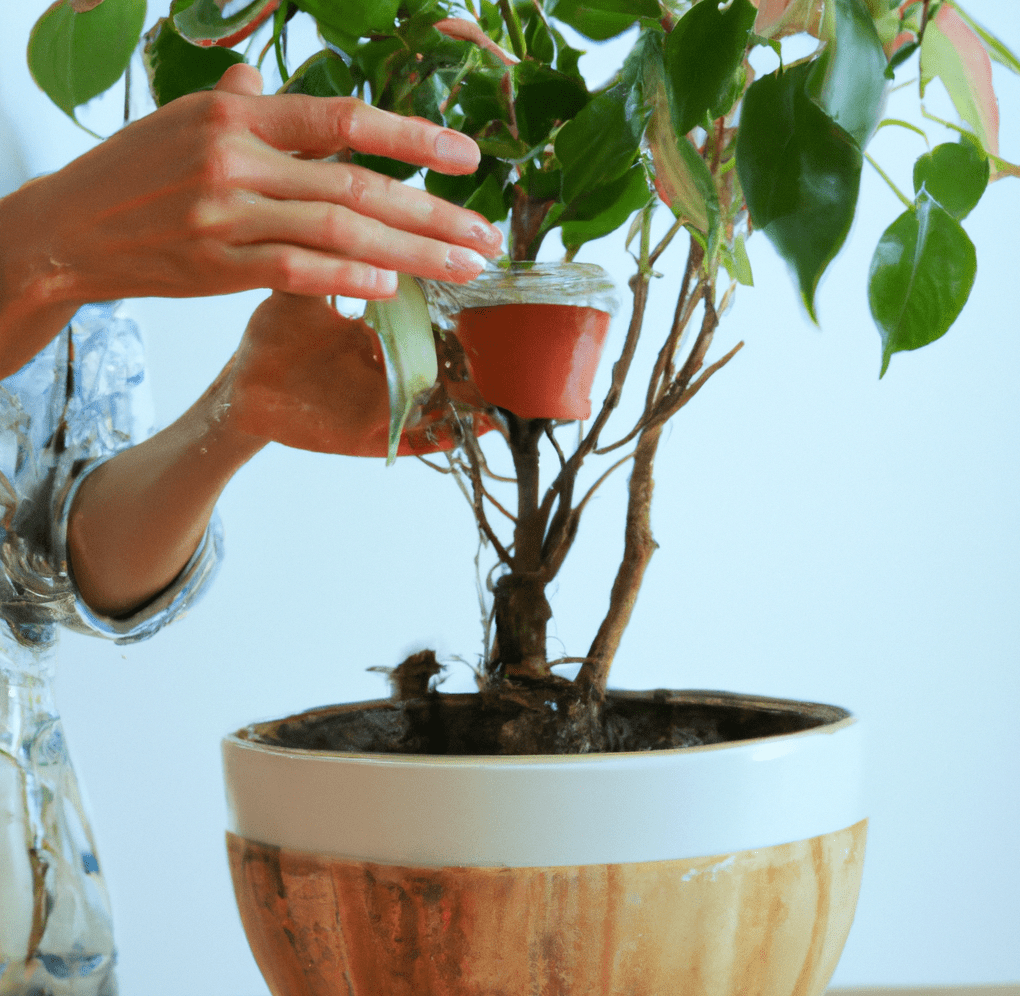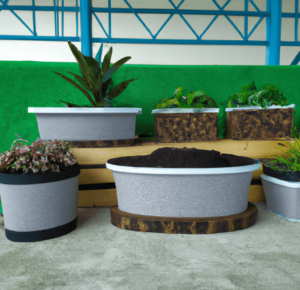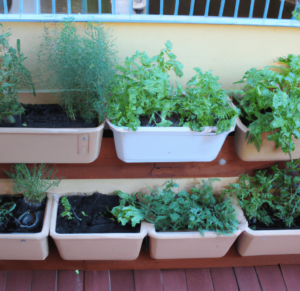Any indoor or outdoor location can benefit from the life, color, and beauty of potted plants. Potted plants, however, need the right care and attention in order to survive and develop. When you’re learning how to properly care for potted plants, there are things to think about, from selecting the proper soil and water to comprehending the requirements of each individual plant species. Here’s our guide to how to take care of your potted plants!

Choosing the Right Pot
After you’ve chosen the best plants for your container garden, you’ll need to choose the right pot before learning how to properly care for potted plants. The pot should offer enough space for the plant’s roots and foliage to expand, as well as appropriate space for soil drainage and watering.
When choosing a pot, take the plant’s size, the potential for future development, and unique requirements into account. For instance, some plants’ root systems require larger pots, whilst others can do well in smaller, more compact pots. The pot’s composition must also be taken into account because some materials, like terra cotta, can absorb moisture and change the soil’s and the plant’s water content.
How to Select the Appropriate Size and Shape of Pot for Different Plants
Before learning how to properly care for potted plants, you to take the plant’s root system and potential development into account when choosing the size and shape of the pot for your potted plants. While a pot that is too large could result in water retention for an extended period of time and root rot, a container that is too tiny could restrict the plant’s growth and cause root overpopulation.
As certain plants may require a wider container for their roots while others may prefer a taller, narrower pot, the design of the pot should also be considered. In order to prevent soggy soil, it’s crucial to check that the pot has enough drainage holes for the amount of water that will accumulate. You can create a healthy and happy environment for your plants to grow by taking the time to select the proper size and shape of pot for your potted plants and reap the benefits of using planters in your garden.
How to Choose the Right Type of Potting Soil
The sort of potting soil you select is just as crucial as other factors when you’re learning how to properly care for potted plants. The ideal potting soil should be well-draining while still holding onto enough moisture to hydrate the roots of the plants. It should also be supplemented with nutrients that promote plant growth.
It’s advised to use high-quality potting soil rather than garden dirt to prevent root rot. To give the plants a consistent supply of nutrients, you can also amend the soil using a slow-release fertilizer. It is also crucial to keep in mind that various plant species have various soil needs, so before choosing potting soil, make sure to research the particular requirements of the plants you are cultivating.
How to Ensure Proper Drainage and Aeration in a Pot
Potted plants must have proper drainage and aeration in order to thrive. Too-wet soil can result in root rot, while too-dry soil might make a plant wilt. Use high-quality potting soil and pick planters with sufficient drainage holes to guarantee appropriate drainage and aeration.
When you’re learning how to properly care for potted plants, it’s also advised to put a layer of gravel or sand at the bottom of the pot for houseplants or succulents to allow for optimal drainage and aeration. You can guarantee that your potted plants get the water and air they require to develop and thrive by following these instructions.
Watering
One of the most crucial elements in learning how to properly care for potted plants. It’s necessary for both the plant and its root system to survive. Your potted plants will receive enough water to grow without becoming soggy if you water them using the right methods.
The type of plant, the size of the pot, the type of soil, and the location all affect how frequently plants need to be watered. Overwatering must be avoided because it might cause root rot, a disease that frequently affects potted plants. On the other side, inadequate watering might result in soil drying out, which will eventually lead the plant to wilt and die. Stick your finger into the soil of your potted plants to see if it feels dry to the touch. If it does, it’s time to water them.
How to Determine the Appropriate Watering Schedule for Different Plants
Watering potted plants correctly is crucial, but different plants require varying amounts and frequencies of watering. In order to maintain the health and vitality of each individual plant, it is essential to comprehend its unique requirements. A succulent will require different watering requirements than a houseplant, for instance.
Underwatering can make the plant stressed and more prone to disease while overwatering can result in root rot and saturated soil. The type of plant, the size and type of pot, the potting soil, the room’s temperature and humidity levels, and the quantity of sunlight the plant receives should all be taken into account when you’re learning how to properly care for potted plants and are creating a watering schedule.
How to Properly Water Potted Plants
When you’re learning how to properly care for potted plants, here are a few things to keep in mind when watering them:
- One technique is to water from the bottom by submerging the pot in a tray of water and letting the soil soak up the liquid. This is especially helpful for delicate indoor plants that could struggle to hold up against a large watering can.
- You can also irrigate the soil directly with a watering can, being careful not to injure the stems or leaves. If you have several containers, think about grouping them and watering them all at once to make the process easier and guarantee uniform hydration.
Whatever method you choose, it’s important to keep an eye on the soil and make sure that the potted plants’ roots get enough water.

How to Avoid Over-Watering or Under-Watering Potted Plants
Over or under-watering potted plants is one of the most frequent issues that gardeners and plant lovers encounter. This might cause the plant’s roots to rot, which would be fatal. It’s critical to comprehend the watering requirements of the unique potted plants you have in order to prevent either overwatering or underwatering when you’re learning how to properly care for potted plants.
When choosing the right watering plan, it’s crucial to take into account the soil type, pot size, and surroundings. Additionally, keeping an eye on the soil’s moisture levels and inspecting the roots for any indications of root rot will assist prevent over- or under-watering. You can make sure that your potted plants get the ideal amount of water for development and health according to these recommendations.
Lighting
Care for potted plants, especially indoor plants, requires the right lighting. The amount of light that various plants need to thrive varies, so it’s important to do your homework and learn what your particular plant needs.
When learning about how to properly care for potted plants, your plant may eventually need to be repotted into a larger container to fulfill its growing needs, including its lighting specifications. You can avoid stunted development and keep your potted plants healthy and thriving by making sure they get enough light.
How to Provide the Appropriate Amount of Sunlight for Different Plants
Providing potted plants with the proper quantity of sunshine is one of the most important aspects of learning how to properly care for potted plants. Researching each individual plant and its unique demands is vital because different plants have varying light requirements. While some plants, like ferns and African violets, prefer more shade and diffused light, others, like succulents and cacti, need intense, direct sunlight.
Consider the quantity of light the space receives and how it could alter throughout the day when choosing a spot for your potted plants. If you’re growing plants indoors, think about putting them close to a window that gets the correct amount of light, or use artificial lighting to boost what they already get. Your potted plants must have a balanced supply of light, water, and soil in order to thrive and live a long time.
How to Use Artificial Lighting to Supplement Natural Light
Artificial lighting can be an excellent way to complement the natural light requirements of potted plants for people who have little natural light in their homes or workplaces. Having the proper illumination can have a huge impact on the health and beauty of your indoor plants, whether you have one or a whole collection. There are many options to pick from, like LED grow lights and fluorescent bulbs, to make sure your plants get the correct amount of light for optimum growth.
When selecting an artificial light source, it’s crucial to take the individual lighting requirements of your potted plants into account. For instance, while ferns and other plants that like the shade may benefit from diffused, indirect light, succulents and cacti require intense, direct light. Even in low-light situations, your plants can remain healthy, lush, and thriving by being aware of their light needs and utilizing artificial lighting to complement the natural light.
How to Protect Potted Plants From Excessive Heat or Cold
Due to their removal from the ground’s natural insulation and exposure to the weather, potted plants are particularly susceptible to temperature changes. Protecting your plants from harsh heat and cold will help to ensure their continued health. To avoid sunburn in the summer, potted plants can be moved to a shaded location or covered with a sheer fabric.
As you learn how to properly care for potted plants, they should be protected from chilly winds and rain in the winter. Monitoring the soil’s moisture content is also crucial because dry soil can quickly heat up and harm roots. Potted plants should be brought indoors or placed in a greenhouse when the weather drops below freezing. No of the season, giving your plants the proper protection from harsh temperatures will help them remain strong and healthy.
Fertilizing
Fertilizing is a crucial component of caring for potted plants correctly. The right fertilizer must be chosen for each plant because they all have different nutrient requirements. Additionally, it’s critical to apply fertilizer to potted plants correctly because improper or excessive fertilization might harm the health of the plant. You can help make sure that your potted plants get the nutrients they require to grow according to the recommendations for fertilizing particular species.
Pest and Disease Control
Like any plant, potted plants can be susceptible to a number of pests and illnesses. It’s critical to recognize and take precautions against common pests and diseases that harm potted plants, such as powdery mildew, scale insects, and spider mites. To avoid dangerous chemicals in the soil and water, it is advised to adopt natural, non-toxic approaches, such as introducing beneficial insects like ladybugs and praying mantises. Also, it’s critical to isolate affected plants and frequently clean and sanitize pots and tools in order to stop the spread of pests and illnesses. Your potted plants can remain healthy and flourish if you exercise caution and take the appropriate precautions.
Repotting
Repotting potted plants at the right time is a common part of caring for them properly. When a plant has outgrown its present pot and its roots have completely occupied the container, the plant must be replanted since its capacity to absorb water and nutrients from the soil is hampered. You can gently take a plant from its pot and look at the roots to see whether it needs to be repotted.
Repotting is necessary if the roots have filled the pot and are starting to encircle the soil. It’s crucial to use a pot that is the right size and has enough drainage holes when repotting a plant. After repotting, it’s critical to water the plant thoroughly and use fresh, high-quality potting soil. Following repotting, the plant should be carefully observed for any signs of stress, such as wilting or yellowing of the leaves, and watering and lighting should be adjusted as necessary.
Bottom Line: How to Properly Care for Potted Plants
Learning how to properly care for potted plants means learning how to give them the proper quantity of water, soil, light, and fertilizer, as well as repotting them when necessary. It’s crucial to pay attention to the unique requirements of every single plant and to make adjustments as necessary.
How to Properly Care for Potted Plants FAQs
What is the significance of caring for potted plants properly?
Any indoor or outdoor space can benefit from the life, color, and beauty of potted plants. But in order to survive and grow, they need the appropriate support and care. If neglected, the plants may experience root rot, soil drying out, or overcrowding.
How do I pick the best container for my indoor plants?
You should take the plant’s size, potential growth, special requirements, and the pot’s makeup into account while selecting a container. The pot should have adequate room for the plant’s roots and foliage to grow, as well as space for watering and soil drainage.
What factors should I take into account while choosing the size and design of the container for my houseplants?
You should take into account both the pot’s design and the root system and possible growth of the plant when choosing the pot’s size and form. A pot that is too big could cause root rot and prolonged water retention, whereas a pot that is too tiny might limit the plant’s growth and lead to root overcrowding. Ensure that there are adequate drainage holes in the pot for the volume of water that will collect.
What kind of potting soil should I use for my houseplants?
While yet retaining enough moisture to hydrate the roots of the plants, the optimum potting soil should be well-draining. Supplementing it with nutrients that encourage plant growth is also a good idea. To avoid root rot, use high-quality potting soil instead of garden soil. Additionally, you can improve the soil by utilizing a slow-release fertilizer. Research the specific demands of the plants you are growing because different plant types have distinct soil needs.
How can I make sure a pot has adequate drainage and aeration?
For potted plants to flourish, appropriate drainage and aeration are essential. To ensure proper drainage and aeration, use planters with enough drainage holes and high-quality potting soil. For succulents or houseplants, you can also add a layer of gravel or sand to the bottom of the container to promote proper drainage and aeration.
What is the significance of watering houseplants in pots?
One of the most important aspects of caring for potted plants is watering. Water is necessary for the survival of the plant as well as its roots. Inadequate watering can cause the soil to dry up and the plant to wilt, while overwatering can result in root rot. How often plants need to be watered depends on the type of plant, the size of the container, the type of soil, and the location.
How can I figure out the best watering schedule for each type of plant?
Different plants need to be watered at different times and in different amounts. When planning a watering schedule, it is important to consider the type of plant, the size and type of pot, the potting soil, the temperature and humidity of the space, and the amount of sunlight the plant receives.
What should I consider when watering my houseplants in pots?
You can use the bottom watering method to water potted plants by putting the pot in a tray of water and allowing the soil absorb the liquid. You may also test the moisture content of the soil in your potted plants by dipping your finger into it. If it does, water them immediately.







